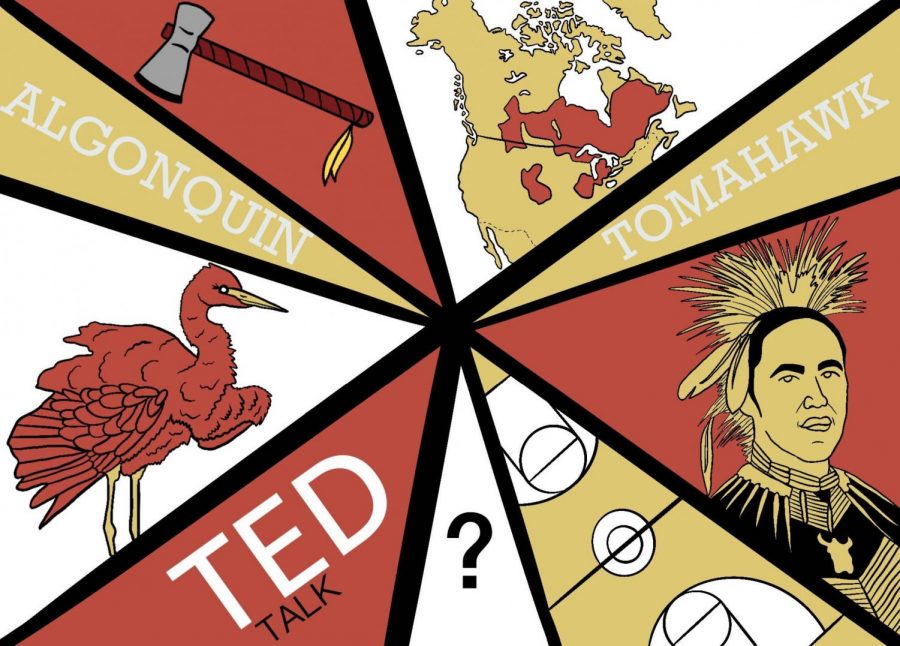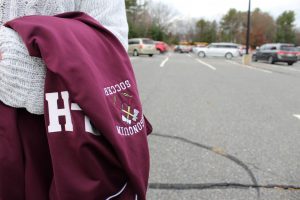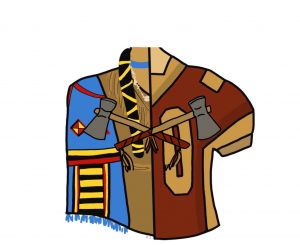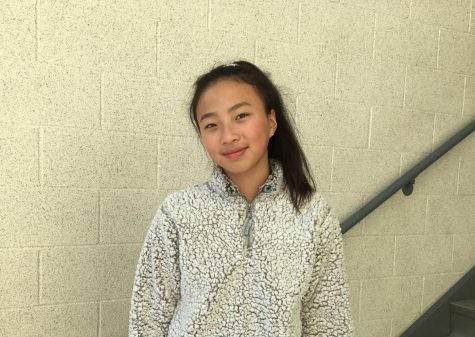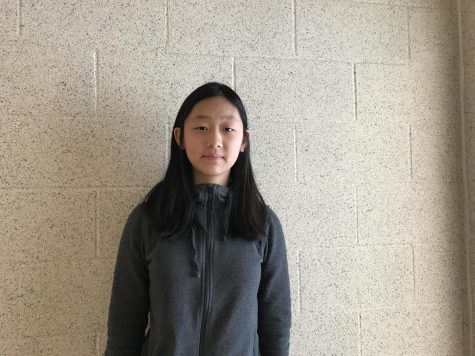Focus groups give insight into student opinion about mascot
Principal Sean Bevan has decided to hold focus groups to gather students’ opinions and insight regarding the school’s mascot.
April 5, 2021
As part of the continuing mascot discussion, Principal Sean Bevan directed 17 teachers in holding focus groups with their students during remote classes on Monday, March 8 to gain an understanding of the students’ opinions and concerns about Algonquin’s current mascot, the Tomahawk.
At the end of 2020, Bevan assembled the Study Group for Mascot Review, a group of community members dedicated to examining the mascot’s impact and whether it should be kept or retired. Although the Study Group contains several students who can attest to the student perspective regarding the mascot, Bevan decided to hold the focus groups to acquire a deeper insight into the opinions of the general student population.
“Even though we have five students in the Study Group, they don’t necessarily represent every last opinion [about the mascot] of every kid, so we wanted to find a way to gather that information,” Bevan said. “We thought focus groups were a good way to gain that level of understanding while also allowing us to find out what kids were concerned about, how their opinions were being shaped and what questions they had that we could address related to the mascot.”
The lesson plan of the focus groups, compiled by Bevan and English teacher Emily Philbin, began with a pre-meeting survey and an introductory video created by Bevan. Student participants then viewed “Indigenous Peoples in Maine are Not Mascots,” a TED Talk by Maulian Dana, and proceeded to have a class discussion about their thoughts and opinions regarding the mascot. The focus groups concluded with a post-meeting survey.
“I really think this TED Talk is a strong one that’s kind of approachable for anyone to listen to,” Philbin said. “[Maulian Dana] makes some really strong points that definitely apply to Algonquin.”
According to Bevan, the surveys and discussions in the focus groups were successful in gathering the desired data about students’ opinions.
“We had 400 kids who told me exactly how they felt [in the surveys], so we got the data in a very quantitative sense, but we also got comments on how kids were feeling about it individually,” Bevan said. “The feelings vary: there was some intense allegiance to [the mascot], some neutral feelings and a great deal of students who felt that the mascot should be retired, so it was a very divisive issue.”
English teacher Seth Czarnecki, another teacher who participated in the focus groups, similarly said that his students’ opinions were divided.
“There were mainly students who either were convinced that the mascot should change or were a bit apathetic and were like ‘the mascot doesn’t mean anything to me, it could change or it could not,’” Czarnecki said. “And there were students who felt like as non-Indigenous people, they didn’t have a right to say whether it should be one way or another.”
Meanwhile, Philbin said that her students tended to lean toward one side, which may be attributed to previous class discussions about Indigenous people.
“My sophomores and my Silenced Voices classes were already talking about natives in our classes, so I think that might have had a bit of an influence [on their opinions],” Philbin said. “I think the students who were already leaning toward retiring the mascot were far more vocal.”
Although student participants were somewhat divided in where they stand on the issue, most were actively engaged in the conversation.
“I think it was hard at first for people to share honestly and openly over Zoom,” Czarnecki said. “But from the students who I could see and who were participating in the discussion, people were engaged, and people were taking notes. When I asked people to do a little free-write, they did. It wasn’t crickets during the discussion; there were definitely some people who had something they wanted to say or some questions to ask.”
Overall, the focus groups served not only as a data-gathering tool for Bevan and his Study Group but also as an educational experience for student participants, who gained a deeper knowledge of the Tomahawk and its context.
“I think that before talking about [the mascot], a lot of students said that they didn’t know a lot of background about it,” Philbin said. “But after they got the information, they thought that it’s important to have a conversation about it… Many students were surprised about some of the things they didn’t know like not crossing the Tomahawks or not putting the Tomahawks on the floor.”
Meanwhile, some students were completely unaware of what the mascot even is, which became evident during the focus groups.
“More than one student—I would say upwards of five students—confessed that they thought that a Tomahawk was a bird, and for a long time, they were confused why there were axes as our mascot because they thought a Tomahawk was a bird,” Czarnecki said. “That was something that was unanticipated, and it came up in more than one class.”
According to senior Fabiha Karim, who participated in a focus group during her Silenced Voices class, the focus groups not only taught student participants about the Tomahawk itself, but also about the school’s outlook on the mascot.
“I think for me, personally, [the focus groups] just helped me get a better perspective as to how the school sees [the mascot], rather than how students see it,” Karim said. “The videos that Bevan made gives students a perspective of how the school and teachers see it.”
With a deeper understanding of the student perspective, the Study Group for Mascot Review is closer to determining what their recommendation to the school committee regarding the mascot will be. The students’ opinions and concerns will serve as a key factor in the final decision.
“The Study Group is still looking through the data from the focus groups and helping me determine what our recommendation is going to be,” Bevan said. “The decision to change or keep the mascot will be made by the school committee, and the student data we gained from the focus groups will be really critical [in this decision] too… The student perspective is one of the key components of whether or not we should change the mascot.”



